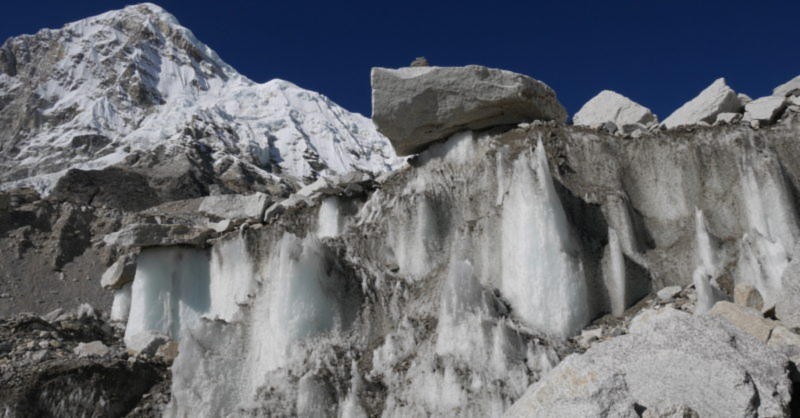Asia’s glaciers are holding out against global warming and are melting more slowly than expected. Extensive studies, carried out with satellites, have shown that the rise in surface temperature of the planet has not yet caused the feared effects on the Himalayan chain.
In the high mountains of Asia lies the largest ice surface outside the Polar region. Something like 100,000 square miles of valleys and icy peaks – about 50 times the ice surface of the Alps.
These glaciers in mountain ranges near the Himalayas, such as the Karakorum, are difficult to access and scientists have so far been unable to collect extensive data.
Now, studies by French glaciologists in collaboration with the University of Oslo, published in the journal Nature Geoscience, revolutionise what has been known so far.
They demonstrate that the loss of ice mass since 2000 is far less important than those predicted by glacier evolution models used to assess their past and future contribution to rising sea levels, according to Le Figaro.
The researchers who collaborated in the study have collected pictures taken by satellite Aster launched in 1999 by NASA. A giant archive: 50 thousand pairs of photos taken in 16 years, from 2000 to 2016. An interesting archive for longitudinal climatic studies.
The result: glaciers of this immense territory are reduced by 20 cm a year, i.e. three to five times less than in the Alps in the same period and approximately twice as low as the Earth’s glaciers average, according to the study.
But within the Himalayas there are great variations: to the west of the Tibetan plateau, the Karakorum and Kunlun glaciers (roughly one-third of Asia’s glaciers) gain slightly in mass, while in the east the scientists have pointed out ice melts as fast as those of alpine glaciers.
Scientists argue there are many reasons for their observations. The first is that in this region summer temperatures do not increase, indeed they tend to decrease. And during the winter there is a greater amount of snow. In addition, glaciers in wetlands such as those in the east of the Tibetan plateau are more sensitive to heating and are steadily declining throughout the year, as opposed to glaciers in the more arid areas.
Depending on the regions of the globe, a rise of 1°C in temperature does not have the same effect. Two new measures should help scientists to improve knowledge and refine hydro-glacial models, but these discoveries are equally important to local authorities.
Glaciers in this region of the world are a vital resource in terms of fresh water for something like 100 million inhabitants from Pakistan to Kyrgyzstan.




































